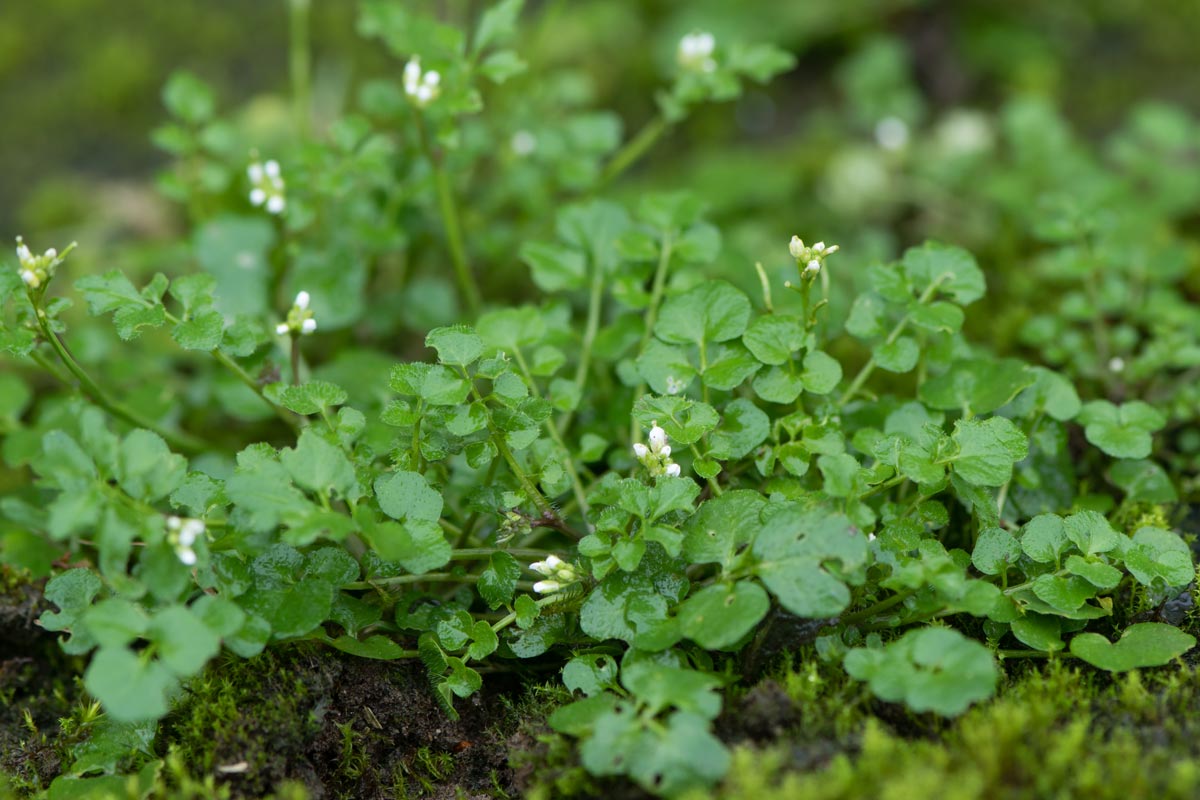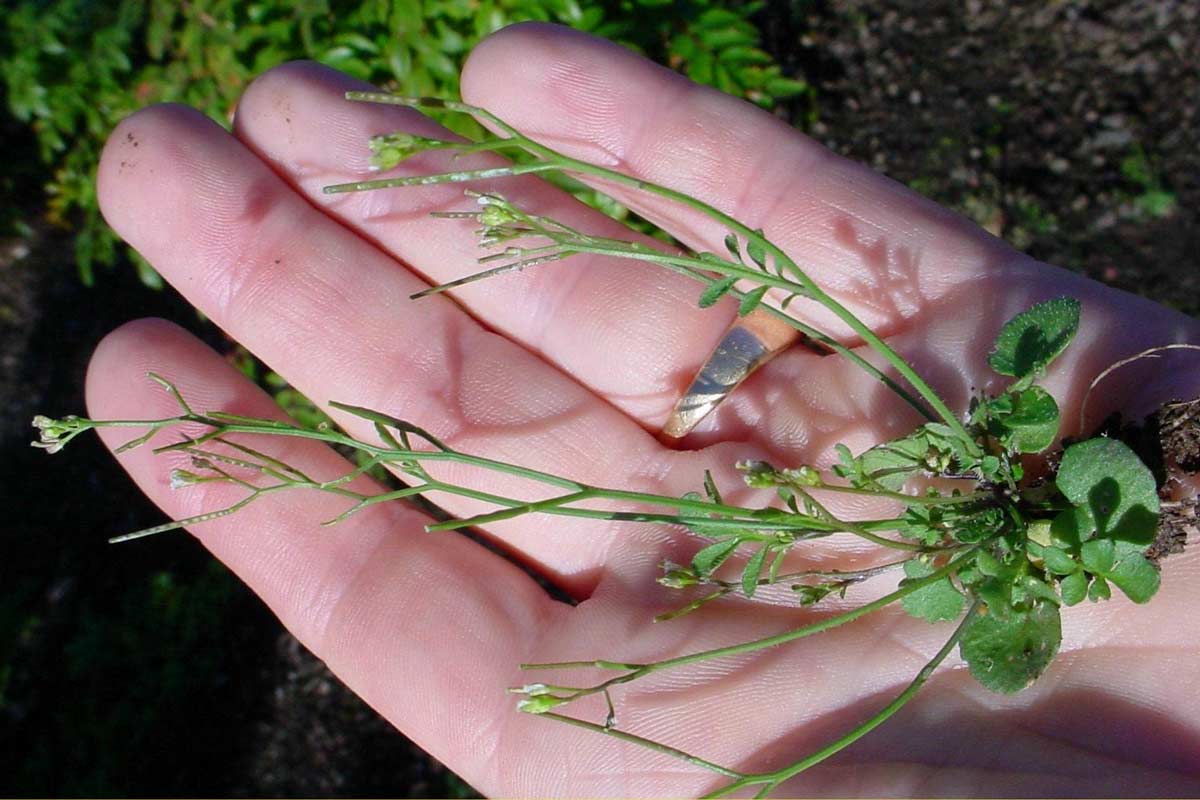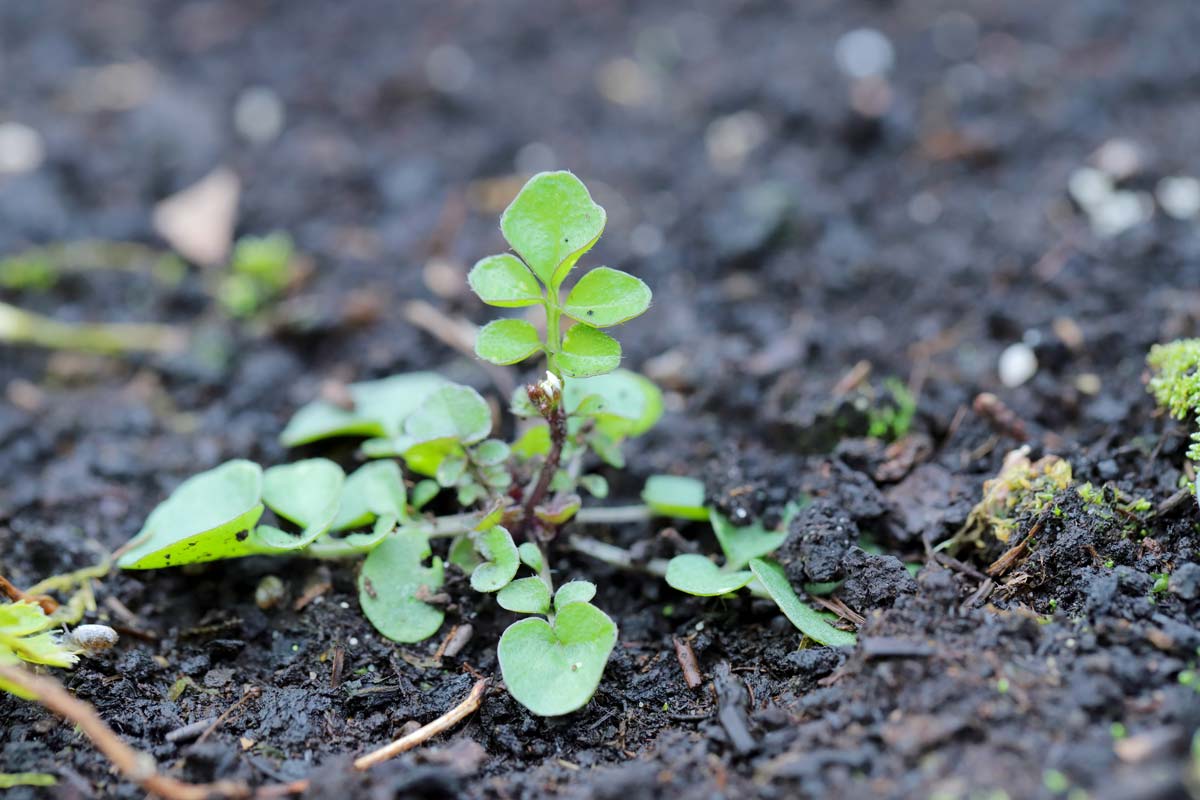5 of the Worst Weeds That Sprout in Fall
Some weeds actually prefer sprouting in the cooler temperatures of fall, surviving semi-dormant over winter, then kicking into high-growth gear in spring.
So you take the season’s first good look outside as winter is winding down, and somehow the garden beds and lawn are covered with clumps of weeds that weren’t there last fall. What happened? Where did those weeds come from?
Most early-year invasions are the work of weeds known as winter annuals, which are species that germinate in the cool weather of fall, then survive winter, then thrive in early spring.

Hairy bittercress (Cardamine hirsuta) is a common weed in the mustard family (Brassicaceae). Ian_Redding / iStock / Getty Images Plus
One of the worst and earliest offenders in this group is hairy bittercress (Cardamine hirsuta). This short, mustard-family weed with the little white flowers is native to Europe and Asia, but it seeds around so well that it’s spread worldwide, including throughout nearly two-thirds of the U.S.
It’s also not picky about where it grows, and according to Michigan State University, hairy bittercress can send out up to 5,000 seeds per plant per year. That combination explains why hairy bittercress is a weed that seems to be plaguing yards more than ever.

Hairy Bittercress flowers and seed pods. Richard Old | www.xidservices.com
End of winter through spring is when hairy bittercress is most prominent. By then, those fall-sprouted plants have grown into three- to four-inch-tall clumps or “rosettes” with stems that have small, rounded, green leaves. The leaves are arranged alternately up the stems.
The trouble starts when wiry stalks begin poking up six to eight inches above the clumps and start forming dainty white flowers at the tips. Within days to weeks, the flowers mature into long, narrow, purplish seed pods that contain the weed’s seeds. Not only are these pods prolific seed producers, they shoot the seeds up to several feet away when touched or blown by a breeze.
Hairy bittercress typically dies and disappears by summer, but by then, the seeds are safely settled over the ground, where they can remain viable for years.
Hairy bittercress will grow in sun or shade and everywhere from garden beds and lawns to woods, meadows, and roadsides. It especially thrives in cool, damp weather.

Seedling of hairy bittercress (cardamine hirsuta). Tomasz Klejdysz / iStock / Getty Images Plus
Once you’ve noticed a hairy bittercress outbreak, the most important step is to keep plants from maturing new seeds. Allowing those seeds to shoot will worsen the infestation and set the stage for trouble for years.
In garden beds, most hairy bittercress plants come out fairly easily by hand or with the aid of a weeding tool since the plants are young. Pulled plants can be composted if you get them before they’ve had a chance to set seed.
Hairy bittercress plants in garden beds also can be spot-sprayed with non-selective, kill-everything herbicides or with herbicides labeled for control of broadleaf weeds. (Check to be sure hairy bittercress is included on the label list of weeds controlled). Be careful not to let sprays drift onto nearby landscape plants because herbicides likely will kill or injure those, too.
In the lawn, regular mowing can help continually chop off the flower stems before the seeds have a chance to mature. Plants in the lawn also can be killed with most liquid or granular broadleaf weed-killers formulated for lawns, such as Preen Lawn Weed Control or Preen One Lawncare.
These work best when plants are actively growing, which means that in the case of early growers like hairy bittercress, applications need to be made earlier than the usual mid-spring time frame.
While pulling and spraying can clean up a current outbreak of hairy bittercress, that likely won’t stop new weeds from germinating in the fall to create a repeat problem next winter.
In garden beds, a two-inch layer of mulch can help smother hairy-bittercress seeds and prevent them from germinating. Also helpful is a late-season application of Preen Extended Control Weed Preventer, which prevents hairy bittercress seeds from germinating for up to six months. Ideal timing is late summer to early fall – just before hairy bittercress starts to germinate. Preen Extended Control Weed Preventer can also be applied over top of and worked into mulch, giving beds double protection.
A second application can be done in spring to give season-long protection against more than 125 common weeds, including hairy bittercress.
In the lawn, one of the best defenses is to encourage thick grass, which lessens space for any new weed to sprout. Regular fertilizing and overseeding the lawn with additional grass seed can help with that.